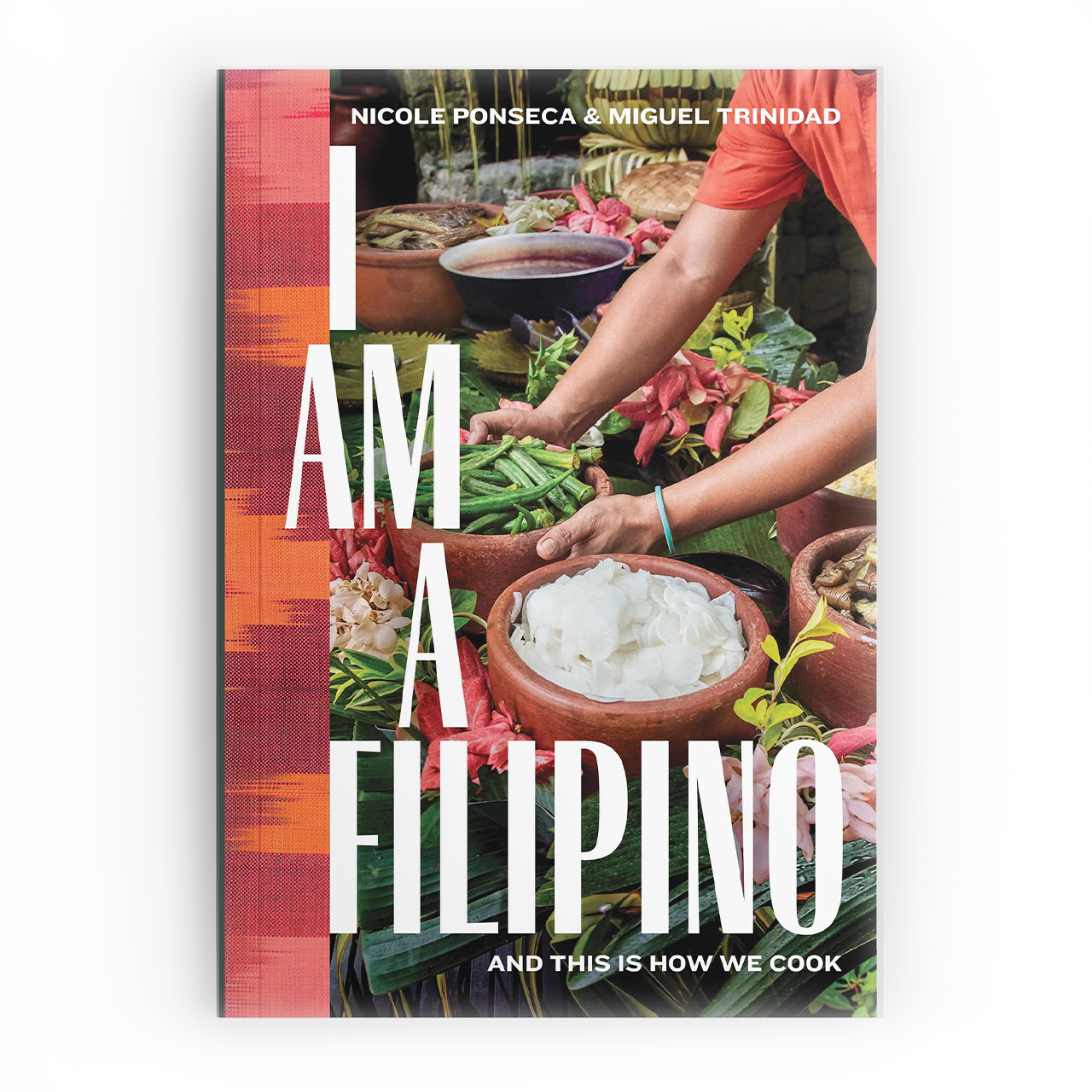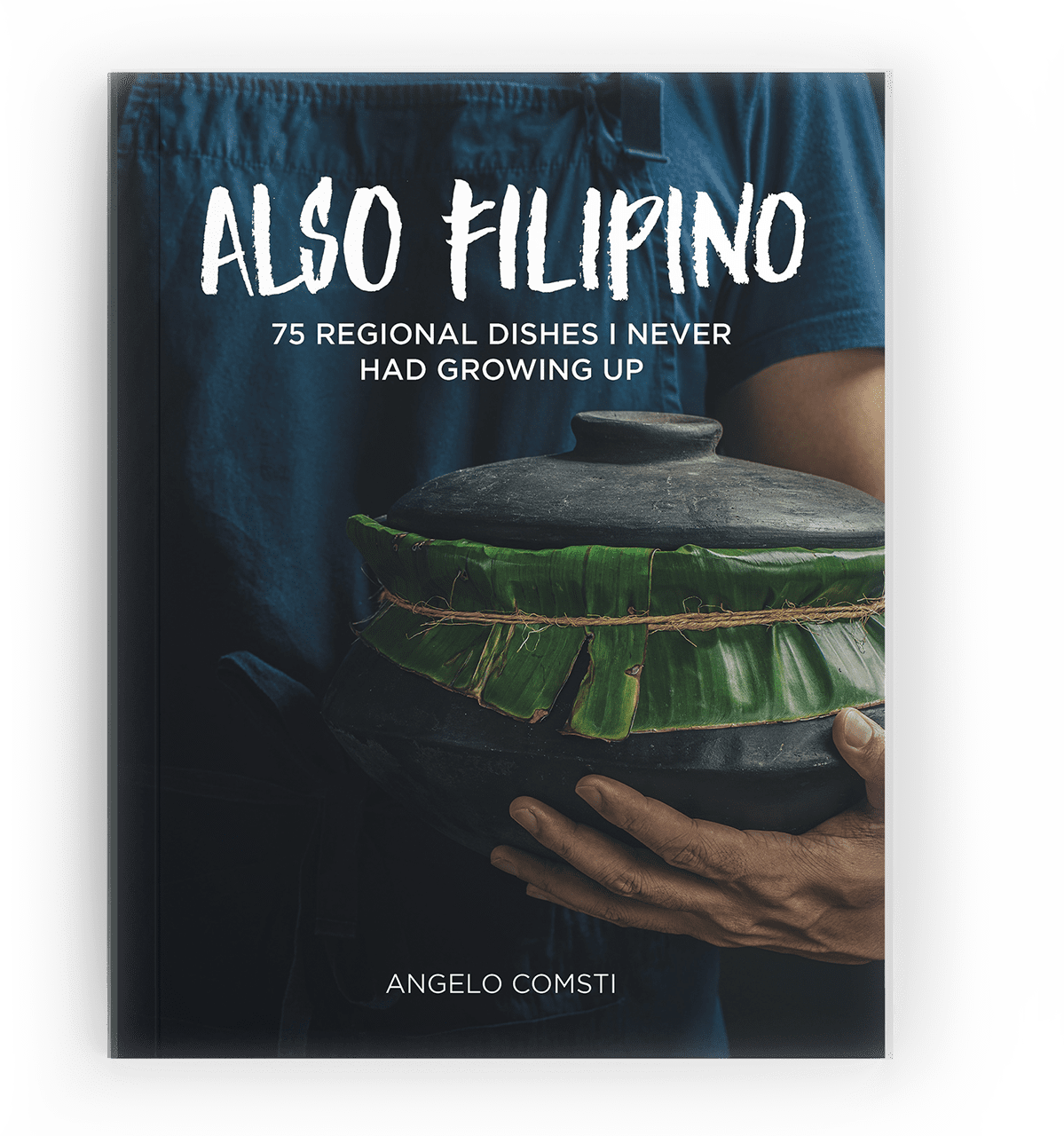These five cookbooks will guide you through your next feast.
Nothing gathers Filipinos like a table full of food and the promise of laughter and “kwento.” Though Filipino identity is hard to define neatly, thanks to our archipelagic nature and long history of trade, colonization, and migration, there’s one thing we can agree on; that our love of celebrating over a hearty meal is undeniably an intrinsic part of our culture.
In the last half a decade or so, Filipino food has finally gotten its due in the global landscape. In 2017, during the first inklings of popularity, our cuisine was touted as the “Next Great American Cuisine” and that it has found its “Place in the American Mainstream.”
Filipino Chef Pilar Valdes of The Drew Barrymore Show, and co-author of Rebel Homemaker previously told Vogue Philippines how staples like coconut milk, ube, and calamansi are everywhere now, which was almost unheard of over a decade ago. Hollywood-based celebrity private chef Khristianne Uy, known as Chef K also recently shared with us how she now proudly serves desserts with pandan or turon to her A-list clients, like Kris Jenner and Kourtney Kardashian.
Along with the emergence of our cuisine in the west comes a whole new crop of Filipino-authored cookbooks which use the format to explore what it means to be Pinoy. Whether you’re born and based in the motherland or are part of our growing diaspora, there’s no better time to celebrate our heritage than with the one thing we know how to do best—eat.
At your next gathering, consider whipping up a feast from these five cookbooks which highlight our Filipino identities, no matter your background.
Filipinx: Heritage Recipes from the Diaspora

Acclaimed chef, New York Times contributor, and multidisciplinary artist Angela Dimayuga published her very own cookbook in 2021. Filipinx includes 100 “deeply personal” dishes that have defined Dimayuga as a chef and member of the Filipino diaspora. The cookbook’s sections include titles like “Siya: Decolonizing Language” for kakainin, “Listening to Lola” for soups and vegetables, and “Ito Ako – Ancestral Whisper,” for merienda.
Each detail of her book was carefully chosen to invoke aspects of Filipino culture, including the Piña cloth on the cover. New York Times columnist Ligaya Mishan writes of Piña in the opening page of Filipinx that “For Filipinos, embroidery became a way to take ownership of what they wore, to express their characters as individuals, and to make themselves seen and known.” Dimayuga’s recipes are modern yet faithful takes on classic Filipino dishes like adobo; melding her roots with her culinary expertise and creative spirit.
I Am a Filipino: And This Is How We Cook

Written by US-based restauranteurs Nicole Ponseca and Miguel Trinidad, their 2018 cookbook I Am A Filipino offers up 100 Filipino recipes, both classic and modern. The book also chronicles their experiences as children of immigrants in the United States and their desire for greater representation and acceptance of Filipino culture. In the book, Ponseca describes being hungry and starving for someone that looked like her in the media.
The pair, who founded Pinoy restaurants Jeepney and Maharlika in New York, also cover the bases of what it means to be Filipino, essential processes and ingredients, and necessary linguistics in a section of the book titled “Filipino 101.”
Let’s Cook With Nora – New Edition 2019

For many Filipinos, the first edition of Let’s Cook With Nora, which was published in 1965, was a kitchen staple. Nora Daza, who also had her own cooking show Cooking It Up With Nora broadcasted in black and white, guided an entire generation of home cooks.
Her original version now serves as a documentation of what cooking was like in the mid to late twentieth century. In 2019, Nora’s daughter Nina Daza-Puyat released an updated version which she personally kitchen-tested and restyled, ready to assist a new generation of food lovers. Daza-Puyat served as the editor-in-chief of Appetite Magazine and regularly contributes recipes and articles to Manila Bulletin.
Also Filipino: 75 Regional Dishes I Never Had Growing Up

Food writer and entrepreneur Angelo Comsti published his cookbook Also Filipino in 2020. The premise is simple; despite recently achieving global popularity, most people have barely scratched the surface of Filipino cuisine. Everyone is familiar with adobo, kinilaw, sinigang, or sisig, but what about calandracas from Cavite, pulutok from Pampanga, or Laswa from Western Visayas?
With his book, Comsti aims to answer the question “what is Filipino?” by recognizing regional food that is just as mouthwatering as the rest, yet is often left out of the spotlight. Described by some as “our next national cookbook,” the 75 recipes he includes are friendly and accessible to Filipinos or even foreigners, who want to discover more of the vast repertoire of our local cuisine.
Amboy: Recipes from the Filipino-American Dream

Written by Alvin Cailan, creator of the legendary LA gourmet sandwich concept Eggslut and host of the online series The Burger Show, the 2020 title Amboy tackles Cailan’s journey of finding success despite having to overcome cultural nuances. Amboy, short for American Boy, was a nickname given to him by his grandmother in the Philippines.
Coming from an immigrant Filipino family in East LA, these hurdles left him feeling both not American enough for America and not Filipino enough to be Filipino. He tells his story through the narrative of his own recipes, which include home staples like arroz caldo, beef nilaga, sinigang, and “Dad’s tortang giniling.”